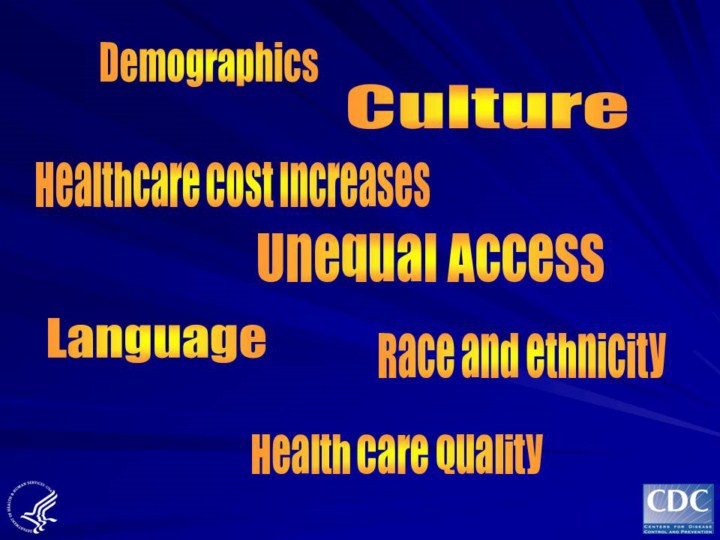| front |1 |2 |3 |4 |5 |6 |7 |8 |9 |10 |11 |12 |13 |14 |15 |16 |17 |18 |19 |20 |21 |22 |23 |24 |25 |26 |27 |28 |29 |30 |31 |32 |33 |34 |35 |36 |37 |38 |39 |40 |41 |42 |43 |44 |45 |46 |47 |48 |49 |50 |51 |52 |53 |54 |55 |56 |57 |58 |review |
 |
Demographics, Culture, Healthcare Cost Increases, Unequal Access, Language, Race & Ethnicity, Health Care Quality
Compelling evidence indicate that race and ethnicity correlate with persistent, and often increasing health disparities among U.S. populations. The disparities occur for a variety of reasons including unequal access to health care (including clinical and community preventive services), discrimination, language and cultural barriers (as indicated in several IOM Reports including the report on Unequal Treatment). Eliminating racial and ethnic disparities in health will require the use of several research and planning components:
•New
knowledge about the determinants of disease, causes of disparities and
effective interventions for prevention and treatment;
•Collection
and use of standardized data to correctly identify all high risk
populations and monitor the effectiveness of health interventions
targeting these groups;
•Enhanced
efforts to prevent disease, promote health, and deliver appropriate
care;
•Creation/expansion
of culturally appropriate, community-driven approaches to identifying
causes of disparities;
•Improvement
in access to quality preventive and treatment services and innovative
ways of working in partnership with health care systems, minority
academic institutions, and local communities.
Source: “Slides for Judith.ppt”
|